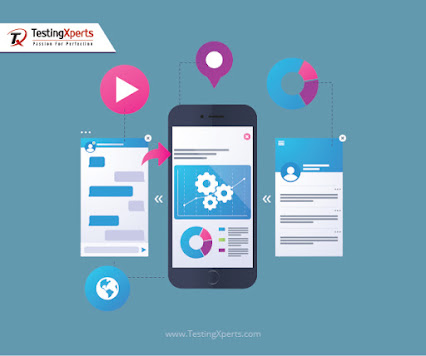QA testing is an important part of software development. For that reason, it's important to get the best and powerful automation tool available in the marketplace. The best option is an automation tool that lets you not only create automated tests but also completely automate the entire QA testing procedure. In cases like this, the automation tool becomes the QA tester's helper; it can perform just about any QA testing activities, such as conduct scheduled automated tests, checking results, sending reports to various issue-tracking systems, and far more.
Functional testing consists of testing the interface between the application on one side and the remainder of the system and users on the other side. This report describes TestComplete's support for operational testing. It explains how to create a project, produce functional tests and automate the QA testing procedure.
Functional testing is a sort of automated testing that deals with how the software works, or, in other words, its relation to the users and especially to the rest of the system. Traditionally, functional testing is executed by a team of testers, independent of those programmers.
While unit testing evaluations both what an program section does and how it does it, functional testing tests only exactly what the application does. A practical test isn't involved with a program's internal details.
Another way of saying this is that functional testing is"the customer evaluation". But even this is misleading. Developers need a routine during all growth phases -- a developer-independent benchmark -- to inform them what they have and haven't attained. Functional testing starts as soon as there's a purpose to test and continues through the application's completion and initial client contact.
Functional Testing Characteristics
- Automation tools, like, TestComplete, support operational testing of this GUI by automating its insistent facets and producing results in a flexible, filtered form. In addition, TestComplete enriches its operational testing attribute by providing the following opportunities:
- Continuity. Even the simplest functional test ought to be applicable during the life of a project, and it should be capable of automatically measuring outcomes against an already validated regular output. TestComplete's Test Log is designed to fulfil these criteria.
- Application-grade evaluations. Functional testing should be kept external to the program as much as you can. TestComplete provides features that can be made demanded so that this criterion is met:
- Visually constructed keyword scripts and tests using any programming constructions on your evaluations: loops, if-then requirements, try-catch blocks, comments, and so forth.
- A complex library of functional testing objects with simple and transparent procedures and properties that perform any functional testing activities within the software in addition to simulate user actions.
- More items that directly interact with the system or using database servers (ADO, BDE).
- Advanced attributes and methods for functional testing of .NET, Java, and internet applications.
Special properties and methods for careful functional testing of software with the third party controls: Windows Forms, Developer Express, Infragistics, Syncfusion, MFC, Qt, Telerik, and many others. TestComplete provides un-matched accessibility to internal properties and methods of the software for a more in-depth level of operational testing. Programmers have to make sure that the functional tests assess the exact code that worries them. This brings up a possible issue. On one hand, functional testing should be application-independent; on the other hand, it should check the inner objects of the application. TestComplete can get access to the application's internal details that solve this potential issue. The program can be analyzed, but tracked -- both prior to designing the operational test, by viewing it in the Object Browser, also during the functional test, by adding code (external code) to determine if the anticipated internal area has been exercised.


Comments
Post a Comment